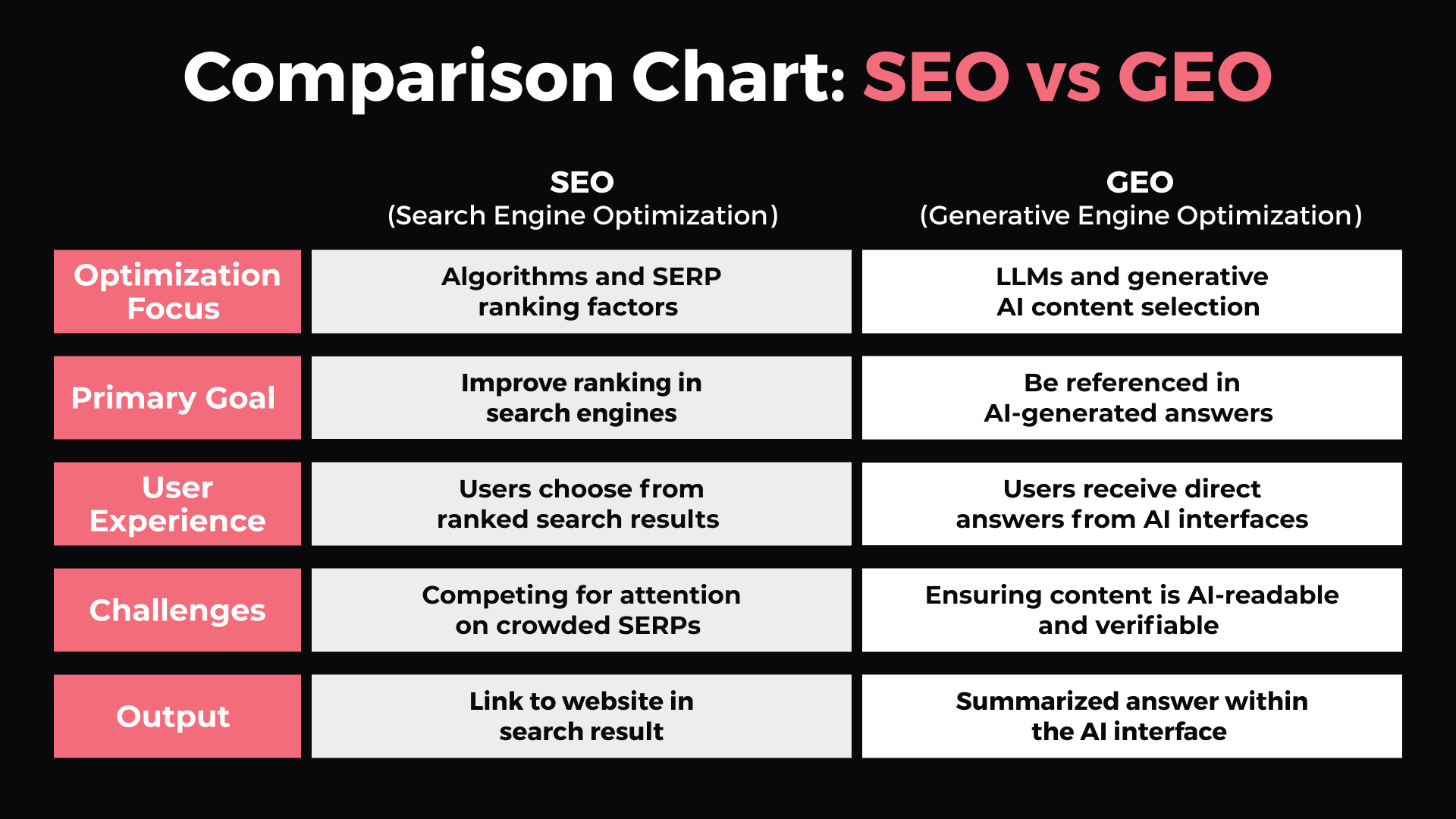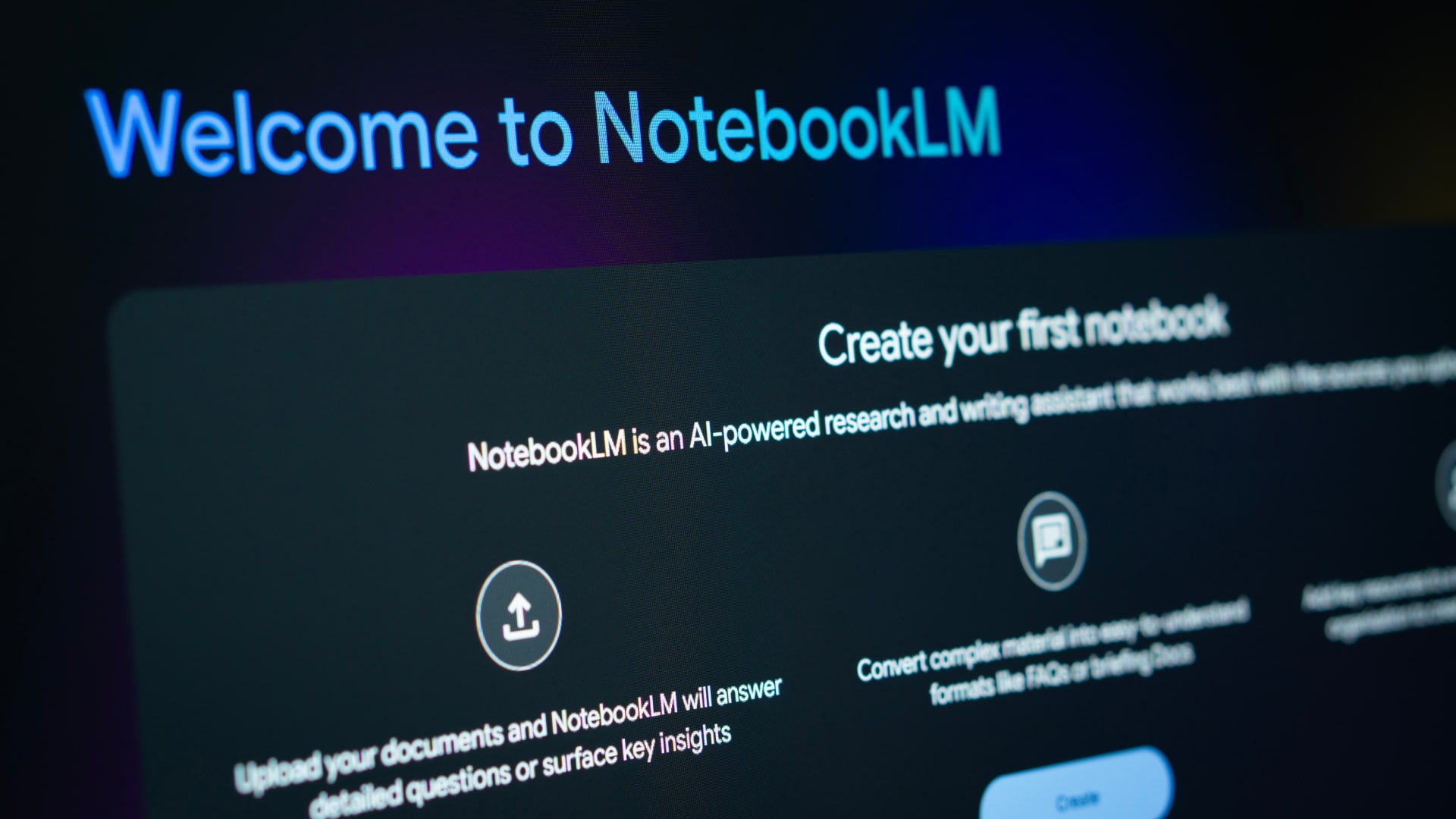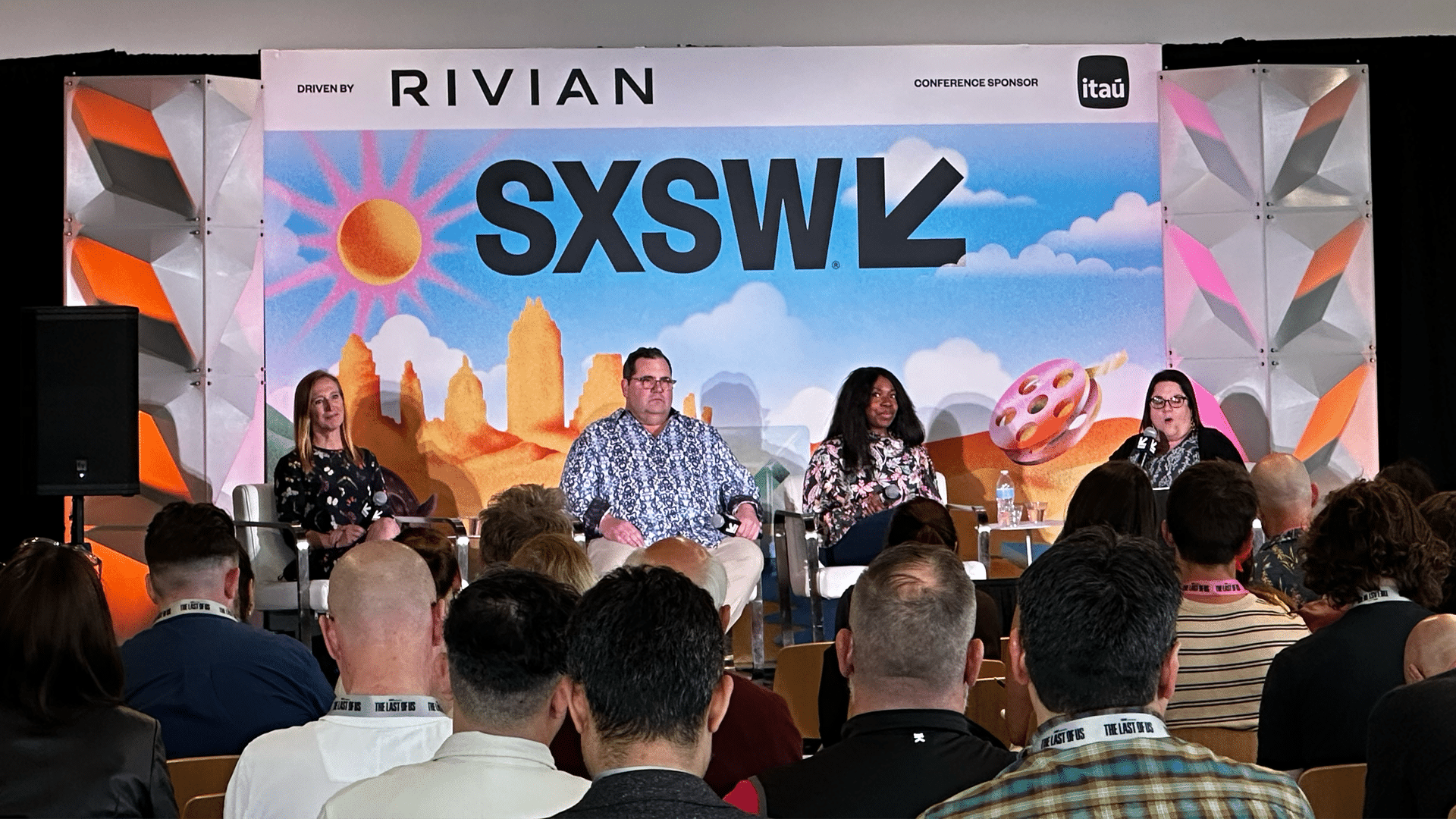For a while there, it felt like B2B marketing had become a spreadsheet sport. Clicks, conversions, CPL, ROAS – we targeted, retargeted and optimized until brand took a backseat. But lately, B2B marketers are making the shift, and the pendulum is swinging back, with brand finally getting its seat at the B2B table again.
Despite the decades-long narrative that B2B buyers are strictly analytical decision-makers, we know better. Just like you and me, B2B buyers are people – people who weigh their options with both their heads and their hearts.
The Emotional Side of B2B Buying
Research from Forrester, Gartner, Google and others has shown that B2B buyers actually feel more emotionally connected to the brands they choose than consumers do. Why? Because in many cases, the stakes are higher. A bad purchase decision in B2B isn’t just a mild inconvenience – it could mean career risk, wasted budget, or missed business goals. That makes trust, affinity, and brand confidence critical.
Daniel Kahneman, Nobel Prize-winning psychologist and author of Thinking, Fast and Slow, is often credited with the idea that emotions drive up to 90% of our decisions. Logic is still in the room – but it’s not the one steering the wheel. In B2B, building emotional connection through branding isn’t soft. It’s smart.
Why Performance Marketing Alone Doesn’t Cut It
Performance needs the long-term benefits of a strong brand to support the often long and complex buying cycles in B2B. Harvard Business Review has highlighted how over-prioritizing short-term performance tactics can cause businesses to miss out on long-term brand-building gains like trust, recall, and loyalty.
Add to that the fact that only about 5% of B2B buyers are in-market at any given time. That means everyone else must remember you when they finally need you. That’s where a strong brand comes in – it stays top of mind, even when your prospect isn’t yet ready to buy.
A New Generation, A New Media Mix
There’s another reason the return of brand makes sense right now: Millennials.
They’re not the up-and-comers anymore – they’re here, and many are already in decision-making roles. Their media habits? Digital-first. They stream, they scroll, they binge. Which is why we’re seeing platforms like LinkedIn reposition themselves as streaming-first, launching tools like BrandLink, which is currently in Beta, to deliver CTV-style video ad experiences for B2B marketers.
In fact, LinkedIn’s own research shows that Millennials are 80% more receptive to B2B ads on connected TV than older cohorts. That means CTV, once thought of as a B2C-only playground, is now fair game for B2B campaigns – especially if you’re looking to build brand awareness and engage a generation that expects to consume content on their terms. (Quick plug on the value of CTV for those considering its value – CTV can provide the scaling power of TV with the pinpoint targeting of digital, making it compelling addition to your media mix).
So, What’s the Right Balance?
Brand and performance aren’t either/or. They work better together. Some studies are showing that marketers allocating 40%-60% of budget to brand are seeing higher ROI and stronger long-term growth. Your mix will be unique to you, and you should feel comfortable experimenting to find your most productive return.
It’s not about trading clicks for clever slogans. It’s about building something buyers remember and trust, then showing up when they’re ready to act.
Final Thought
B2B marketing doesn’t have to feel like a formula. In fact, it works best when it feels a little more human. The more we embrace the emotional side of decision-making—and meet buyers where they are—the more likely we are to connect, convert, and create lasting impact.
If you’re thinking about how to bring brand back into your B2B mix, here are a few places to start:
- Audit your messaging: Does your brand voice convey trust, confidence, and relevance? Or does it sound like everyone else in your space?
- Invest in upper-funnel tactics: Build your prospect pool through CTV, digital video, and thought leadership content to drive awareness and build credibility and affinity.
- Balance the budget: Recalibrate your media mix to include brand-building activities alongside your performance spend.
- Track brand health over time: Use benchmarks like awareness, recall, favorability, and share of voice – not just leads or conversions – to measure progress.
And of course…keep humans at the center. Whether you’re marketing to engineers, procurement managers, or C-suites, remember they’re people first.
The Latest
We study the game as hard as we play it.
Learn with us what’s now and next.
Related Stories
“I Quit Google Search for AI—and I’m Not Going Back”
Headlines like this, which appeared in The Wall Street Journal last month, reflect a notable change in user habits: Many of us are turning to AI-powered tools like ChatGPT, Gemini, Grok and Perplexity to look up things we would have previously searched in Google. (It’s even spawned a new marketing acronym: GEO or Generative Engine Optimization).
While I’m not ready to shelve “Googling” as a verb, I do agree with many of my peers that it’s time to consider what the move to large language models (LLMs) means for marketers. What happens to search engine optimization (SEO) as users begin to shift away from “search engines”? What happens to PR and media relations when readers start their journey on ChatGPT and not The Wall Street Journal?
I have an answer – and it might surprise you: With the increasing prominence of generative AI and LLM, SEO and PR are more important than ever.
In this blog we explore how generative AI and LLMs are using earned media coverage and what media publications tend to be indexed most frequently.
How LLMs are Using Earned Media Coverage
At Mod Op, we’ve launched a multidisciplinary team of PR professionals, SEO specialists and members of our AI and innovation team to explore, understand, and use AI tools to strategize improved brand presence in AI-generated content.
One of our early findings: ChatGPT tends to cite well-known, authoritative media sources. In other words, mainstream news sites with strong reputations and visibility, like The New York Times (NYT), CNN and Forbes, are heavily represented in ChatGPT’s citations.
How do brands secure mentions in publications like The New York Times (NYT), CNN and Forbes? By effective use of PR and, more specifically, media relations. In fact, MOZ founder Rand Fiskin even cites LLMs and AI indexing as one of the reasons that public relations is the future of marketing:
“Language models are governed by the ‘trusted sources’ they crawl, index, and build up their text corpora,” explains Rand, “Three guesses what influences change in those models. Yup, it’s PR-Influenced Content. The ability to influence how people write about, talk about, and publish about you on the web directly impacts how AI tools respond to questions about your brand, your field, and whether they include you when prompters ask about the problems you solve.”
What Media Outlets is AI Indexing?
To better understand what media outlets are being indexed by LLMs, we decided to look at one of the most popular: ChatGPT. We used ChatGPT4.5 + Deep Research to complete an analysis of what publications are cited most often in ChatGPT, focusing on tech and consumer goods.
Major Media Outlets
According to our analysis, major U.S. outlets like The New York Times (NYT), The Wall Street Journal (WSJ), and CNN frequently appear as cited sources due to their reputation and high search visibility (DeepSeek vs. ChatGPT vs. AI Overviews: YMYL Research Study).
In PR — as well as SEO — we often use metrics like UVM (unique visits per month), which estimates an outlet’s viewership (the modern “circulation”), Domain Authority and Spam Score to judge an outlet’s reputation and search visibility.
| UVM (Similarweb) | Domain Authority (Moz) | Spam Score (Moz) | |
| The New York Times | 134,904,704 | 95 | 1% |
| CNN | 103,289,412 | 95 | 6% |
| The Wall Street Journal | 26,462,489 | 94 | 1% |
News agencies such as Reuters are also commonly referenced (DeepSeek vs. ChatGPT vs. AI Overviews: YMYL Research Study). Like the major U.S. outlets mentioned above, Reuters has a relatively high UVM (50.6k), very strong Domain Authority (94) and low spam score (3%).
Industry-Specific Publications
Alongside general news, ChatGPT cites industry or sector-focused journals and trade publications when addressing industry-specific queries.
In the technology sector, leading tech news sites like TechCrunch, Wired, The Verge, Engadget, and CNET are frequently referenced (Top 100 Tech News Websites for Technology Enthusiasts in 2025). These outlets specialize in tech coverage and often rank highly for tech queries. Again, if we look at common PR and SEO metrics, we see a pattern of relatively high UVM, very strong Domain Authority and low spam score.
| UVM (Similarweb) | Domain Authority (Moz) | Spam Score (Moz) | |
| TechCrunch | 6,747,280 | 93 | 1% |
| Wired | 14,456,786 | 93 | 3% |
| The Verge | 12,348,401 | 93 | 1% |
| Engadget | 3,112,977 | 93 | 1% |
For consumer goods and retail topics, trade publications such as Retail Dive and Consumer Goods Technology are often cited for industry trends and analysis
(Retail Dive: Retail News and Trends) (Consumer Goods Technology: Consumer Goods Industry News …). Similarly, Consumer Reports (for product reviews) and Chain Store Age (for retail news) may appear in citations due to their domain expertise, according to our ChatGPT4.5 + Deep Research analysis.
| UVM (Similarweb) | Domain Authority (Moz) | Spam Score (Moz) | |
| Retail Dive | 287,035 | 80 | 6% |
| Consumer Goods Technology | 40,341 | 53 | 4% |
| Consumer Reports | 7,695,869 | 90 | 2% |
| Chain Store Age | 123,251 | 77 | 4% |
For these more niche publications, UVM becomes less clearly indicative of reputation. We also begin to see Domain Authority dip below excellent, but it’s within the range of what is considered “good” (50 – 60). The spam score remains low.
Wikipedia
One interesting source that emerged from our ChatGPT4.5 + Deep Research analysis: Wikipedia. While not a media outlet, Wikipedia is one of the most cited sources across many topics (DeepSeek vs. ChatGPT vs. AI Overviews: YMYL Research Study). This is particularly interesting when you consider the connection between Wikipedia and earned media coverage.
If you’ve ever tried to make a change on Wikipedia, only to have it quickly scrapped by Wikipedia editors, you’ve likely already discovered the importance of sources.
Earned media coverage acts as a powerful citation engine for Wikipedia pages. When authoritative media outlets write about a topic, person or an organization, these articles serve as independent, verifiable sources that Wikipedia editors can use to support claims.
Publications Most-Cited by ChatGPT
Developed using ChatGPT4.5 + Deep Research, the list below ranks some of the most-cited publications in ChatGPT’s outputs for tech and consumer goods topics (U.S. focus), based on their observed citation frequency in ChatGPT’s answers.
- Reuters
- The New York Times
- CNN
- Forbes
- TechCrunch
- Wired
- The Verge
- CNET
- Retail Dive
While it’s important to note that ChatGPT4.5 – even with DeepResearch – and make mistakes, this is a great starting point.
As you’re looking to PR and media relations to further brand awareness, and how you may be able to use earned media to support AI indexing and AI search visibility, I recommend using a media database like MuckRack to review the UVM, Domain Authority and Spam Score for various target publications. After all, LLMs index publications with smaller UVMs and lower Domain Authority, especially when it’s around niche topics — for example, Consumer Goods Technology, with a UVM of under 100k and Domain Authority in the “good” range (50 – 60).
With all that in mind, here are ten publications I’d recommend exploring:
| UVM (Similarweb) | Domain Authority (Moz) | Spam Score (Moz) | |
| The New York Times | 134,904,704 | 95 | 1% |
| CNN | 103,289,412 | 95 | 6% |
| Forbes | 78,108,059 | 94 | 1% |
| USA Today | 73,481,855 | 94 | 1% |
| The Wall Street Journal | 26,462,489 | 94 | 1% |
| TechCrunch | 6,747,280 | 93 | 1% |
| Wired | 14,456,786 | 93 | 3% |
| The Verge | 12,348,401 | 93 | 1% |
| CNET | 21,466,724 | 94 | 1% |
| Retail Dive | 287,035 | 80 | 6% |
Some final thoughts: consumer search behavior is changing. With users shifting from search engines to AI-powered tools like ChatGPT and Gemini, the role of earned media has never been more critical. For those with established PR programs, refining media targets by integrating metrics like UVM, Domain Authority, and Spam Score can improve the quality and credibility of earned media placements, increasing the likelihood coverage will be cited by AI models like ChatGPT. For those without a PR program – it’s time to start building.
The Latest
We study the game as hard as we play it.
Learn with us what’s now and next.
When it comes to getting discovered online, it’s no longer just about search engine rankings. It’s about being the answer – not just to search engines, but to AI-driven queries as well. Welcome to the new frontier: GEO, or Generative Engine Optimization.
What Is GEO and How Is It Different from SEO?
Search Engine Optimization (SEO) is the long-established practice of enhancing your website to improve visibility in search engine results pages (SERPs). It involves strategic keyword usage, quality content, backlink building, technical improvements, and more – all aimed at pleasing algorithms like Google’s or Bing’s.
Generative Engine Optimization (GEO), on the other hand, is about making your content AI-friendly. Instead of optimizing for ranked lists, GEO is designed to make your content usable by large language models (LLMs) like ChatGPT or Google’s Gemini. The goal is to have your content referenced directly in AI-generated responses.
Traditional SEO: The Foundation of Visibility
SEO is built around matching user search intent with valuable content. Techniques include:
- Keyword optimization
- Content quality and relevance
- Mobile usability and speed
- Internal linking and crawlability
- Authority through backlinks
The objective? To appear on page one – preferably at the top – so users click through to your site.
GEO: The Future of Content Optimization
Unlike SEO, GEO doesn’t focus on rankings. Instead, it emphasizes:
- Clarity and depth of content
- Answer-focused structuring
- Use of statistics, citations, and industry-specific terms
- Intent-based writing, whether informational, navigational, or transactional
The goal here is to provide content that AI can easily understand, extract, and rephrase into helpful, conversational answers.
Comparison Chart: SEO vs GEO

Why Helpful, Targeted Content Matters More Than Ever
With Google’s AI Overviews and ChatGPT’s real-time browsing capabilities, traditional content optimization is evolving. Modern algorithms – and AI models – now look beyond keywords. They analyze the semantic meaning of content and evaluate how well it answers real-world questions.
GEO thrives in this space. It encourages creators to:
- Focus on specific questions or problems
- Provide concise, high-value content
- Use domain-specific language, data, and citations
By doing so, you’re not just hoping to be seen – you’re positioning your content to be used and trusted by AI systems.
How to Optimize for GEO and AI Discovery
Here are actionable strategies to boost your content’s potential for being selected in generative responses:
Content Creation
- Research what questions your target audience is asking to understand the most important topics to address
- Include clear summaries or key takeaways at the top
- Use structured content: headers, bullet points, and short paragraphs
- Answer specific questions clearly and directly
Pro Tip: Start by auditing your existing content for AI-readiness. Ask yourself, “Would this answer be helpful if read aloud by an AI assistant?”
Content Enhancement
- Cite reliable sources and include statistics
- Incorporate industry-specific terms and authoritative tone
- Address various search intents: informational, navigational, transactional
Technical & Distribution Strategies
- Use structured data markup (e.g., FAQ schema)
- Reindex updated content via Google Search Console
- Distribute on platforms like Reddit, Quora, and social media
- Use multimedia formats like infographics or videos
Final Thought: It’s Not SEO Versus GEO – It’s SEO Plus GEO
Think of SEO as the way to be found. Think of GEO as the way to be chosen. They are not opposing tactics — they are complementary strategies. When used together, they allow your content to perform in both search results and AI-generated conversations.
So don’t choose between them. Master both.
The Latest
We study the game as hard as we play it.
Learn with us what’s now and next.
I’m sitting here in front of my computer, reflecting on how every project is an opportunity to create something new to push imagination to its fullest. Our work has always been a ride that challenges us to grow and solve problems through creativity. Now, with AI as our partner, that journey becomes even more exciting.
Over the past few months, I’ve been trying different AI tools made possible by Mod Op’s AI Playground. One of them, Adobe Firefly, can help designers elevate our workflow across different categories like branding, packaging design, and motion graphics, and the list is growing. It’s not just about automation. It’s about using AI intentionally to support the craft, not replace it.
The Transition: From the Traditional design process to Tech-Driven one
In our field, we’ve always relied on mood boards, references, hours of iteration, and pure instinct to craft the right visual. But Firefly is reshaping that process. Instead of starting from scratch every time, we now co-create with AI, curating, guiding, and iterating faster, improving efficiency.
As part of our initiative, we’ve been integrating Firefly into real projects, and it’s playing a key role in our approach to creative design. We’ve used it for projects from packaging, mockups, and typography experiments and creations to early-stage concepting and motion graphics support.
Embracing the Power of AI
In my experience with AI, I’ve learned that the big question isn’t “Will AI replace us?” It’s “How can it help us become better?” Firefly does that by removing the creative friction. It handles the repetitive, time-consuming tasks, freeing us to focus on the thing that, at the end of the day, is what creators do… tell stories. That, in my opinion, is what matters.
This partnership isn’t about doing more for the sake of it; it’s about doing better with more clarity, creativity, and intention.
Why Adobe Firefly is a Game Changer
As exciting as Adobe Firefly is, the most interesting thing about it and the Adobe toolkit may be what’s to come. At Adobe MAX, we got a preview: sketch-to-image generation, more advanced motion capabilities in 2D and 3D, and smarter typography tools. These features aren’t gimmicks. They’re already starting to shape how we explore creative options, especially during the early ideation phase.
Whether I’m working on a product launch or a marketing campaign, Firefly helps me test ideas faster and more efficiently without compromising craft.
Embracing Evolution in Design
Design has never stood still. From paper to pixels, from realism to abstraction, from Bauhaus to digital design, evolution is the constant. AI is simply the next chapter.
And like every chapter before, success lies in how we use the tools. Not every AI-generated graphic, image or video is perfect, and they don’t solve all the problems we creators have. And that’s where our role becomes even more important. It takes a trained eye to understand the brands we work with, and, more importantly, select the elements that work.
The Human Touch Still Leads
So, while AI can help us explore ideas faster, it’s our experience, creativity, and intuition that decide what works and connects with the target audience.
I believe that AI doesn’t mean giving up craftsmanship. It means evolving it. It means combining curiosity, taste, storytelling, and tech to push boundaries. Because that’s what makes a great designer: not the ability to generate, but the ability to connect. To know what works and why. That’s something no model can replicate.
This is just the beginning. We’re learning, adapting, building, and redefining what creativity looks like.
Adobe Firefly, and the entire AI toolkit, are here to elevate the process, to give us back time, energy, and space to think. And if we use them with purpose, heart, and with our own voice as our lead, we don’t lose anything. We gain everything.
Let’s keep creating with intention. With soul. With the human touch that turns pixels into purpose.
The Latest
We study the game as hard as we play it.
Learn with us what’s now and next.
Related Stories
At Mod Op, we’re no strangers to tight deadlines, evolving client needs, and the constant demand for fresh, brand-aligned storytelling. As a PR professional, staying ahead of the curve often means digging deeply into brand materials, mastering a client’s voice, and translating business objectives into meaningful narratives that resonate with media and audiences alike.
That’s why I was excited (and admittedly a little skeptical) – when I first started using Brand Agent, our in-house AI-powered tool.
Spoiler alert: It’s quickly become one of the most valuable resources in my toolkit.
Using Brand Agent in PR
PR teams juggle a wide range of tasks – many of which require a deep understanding of a brand’s identity and strategic goals. Brand Agent helps us accomplish more with less stress and greater accuracy.
1. Faster Media Preparation
For a product launch where we need to develop a full media kit, including talking points, executive bios, and supporting data, Brand Agent can be instrumental. Normally, this would require pulling from multiple sources, including past press releases, internal briefs, meeting notes, and more.
With Brand Agent, we simply upload the newest product documents, merge them with existing client data, and use natural language prompts to extract the exact insights needed. It can help PR teams create clear, concise messaging that reflects the brand’s voice and strategy without spending hours digging through past files. For example, we recently needed to combine two old bios for our client as well as new messaging to create a fresh bio that also highlighted a bit about the value proposition of the company. We were able to easily upload all the documents and Brand Agent provided a new bio that reflected the new messaging as well.
2. Real-Time Reactive Pitching
One of the more demanding aspects of media relations work in PR is reacting quickly to breaking news and trending topics. When an unexpected industry shift occurs, we often need to craft a quick POV for clients – something that is tied to the trend while staying aligned with their positioning.
Using Brand Agent, PR teams can quickly review how the client had previously spoken about similar topics and match it with current campaign messaging. Within minutes, the tool can help generate an on-brand response that is timely and relevant. And because Brand Agent provides access to historical talking points and tone guidance, we don’t need to pause to double-check phrasing or approvals before hitting send. For clients, using Brand Agent can help us turn around POVs three to four times faster than before.
3. Smarter Content Creation
Any PR person knows that drafting press releases or blog posts can be time-consuming. What Brand Agent offers is a starting point that reflects past content, brand tone, and messaging frameworks. For client thought leadership pieces, it can help repurpose existing research into a first draft that hits the right points and tone. Of course, editorial judgment and human polish is still needed, but it can drastically cut down writing time for PR pros.
Why Brand Agent is a Game-changer for PR
It Speeds Up Onboarding
Onboarding new clients is one of the most critical parts of agency life. In the past, it could take weeks to internalize a brand’s voice, its PR goals and competitive landscape. With Brand Agent, that process becomes dramatically more efficient. The PR team can ask questions like, “What are the client’s core brand pillars?” or “How did they position their product in the last campaign?” and get immediate, brand-informed answers. Using Brand Agent, junior team members can ramp up faster on client accounts while senior team members have more time to focus on strategic execution.
It Reduces Siloed Information
In any agency, knowledge can get stuck in silos – especially when it comes to old documents or even teams transitioning off accounts and losing that institutional knowledge base. Brand Agent democratizes access to brand knowledge across teams. PR teams no longer have to wait for an account lead or strategist to send over background on a campaign. This information can be easily accessed via Brand Agent, which understands the context and provides brand-aligned information.
It Enhances Quality and Consistency
Consistency is essential in PR, especially when we’re working with multiple teams and touchpoints. With Brand Agent, we know that client messaging aligns with what the creative team is producing, what the strategist is planning, and what the client expects. It ensures that every piece of content produced reinforces the same brand narrative.
Security and Trust Built In
One of the most common concerns about AI tools in our industry is data security. Clients are cautious about how and where their proprietary information is being used. With Brand Agent, we can assure clients that their data is secure. In this closed LLM, no client information is fed into open models. One of Brand Agent’s biggest differentiators is that it doesn’t train public systems, so access can be tightly controlled within our team.
Brand Agent hasn’t replaced the creative thinking, storytelling skills, or media instincts that are essential to PR, but it has elevated them. It has freed up time for deeper thinking and it can make PR work faster and more accurate, and our teams more confident in their output. And most importantly, Brand Agent will help PR pros deliver more consistent value to clients.
The Latest
We study the game as hard as we play it.
Learn with us what’s now and next.
Related Stories
Recently, I had the opportunity to help test a new AI platform at Mod Op called Brand Agent. Brand Agent is a large language model (LLM) that is extensively trained on client data and information to act as an information retrieval portal when asked pointed questions.
It was an interesting experience – not just because I got an inside look at how the platform functions, but because I played a role in coordinating the testing process, gathering insights, and helping shape how we might use Brand Agent internally in the future.
Getting the Right People Involved
When we kicked off testing, one of the first steps was ensuring we had a well-rounded group of testers. Since Brand Agent is designed to support various aspects of our work, we needed input from people across different parts of the agency – PR, strategy, creative, and more. Each of these teams interact with client data in unique ways, so it was important to have a diverse set of perspectives to get the full picture of what Brand Agent could do.
Once we identified our key testers, we made sure they understood what we were looking for in their feedback. We didn’t want the testing to feel like just another task to check off: we wanted it to be a meaningful experience that would actually help improve the platform. That meant setting clear expectations and making sure everyone was logging their findings consistently.
Watching the System in Action
One of the most fascinating parts of the process was seeing how Brand Agent handles data. Once testers selected which client they wanted to work with, we loaded the platform with relevant publicly accessible data. Seeing this in action made it clear just how much potential AI has in our industry, especially when it comes to making sense of large amounts of data quickly.
But, as with any new tool, Brand Agent needed refining. Some testers found certain functions intuitive, while others ran into roadblocks that highlighted areas for improvement. The feedback we gathered helped pinpoint what was working well and what needed to be tweaked to make Brand Agent more effective across different teams.
Turning Feedback into Action
At the end of the testing phase, I compiled all the insights into a wrap-up report. This wasn’t just about listing what people liked or didn’t like, it was about identifying patterns, surfacing key takeaways, and outlining next steps for making Brand Agent a more valuable internal tool.
One of the most valuable things we learned was how different teams approached the platform in their own ways. Creative teams, for example, were focused on brand guidelines and messaging insights, while strategists wanted a deeper dive into audience behavior. Understanding these nuances will be key in shaping how we refine Brand Agent moving forward.
Looking Ahead
Overall, this was a great experience – not just because I got to see an AI platform evolve in real time, but because it gave me a new perspective on how different teams within the agency interact with technology. The testing phase was just the beginning, and I’m excited to see how Brand Agent develops from here. There’s a lot of potential for AI to enhance the way we work, and I’m looking forward to seeing where we take Brand Agent next.
The Latest
We study the game as hard as we play it.
Learn with us what’s now and next.
Related Stories
This year at Mod Op, something interesting happened. Without much fanfare, we quietly introduced over 60 specialized AI teammates into our daily work. We call them Brand Agents – custom-built, brand-aware digital collaborators that help our teams do better work. No press releases, no grand proclamations about “revolutionizing” anything. Just steady progress toward making our clients unforgettable. Here’s the story.
What’s a Brand Agent, anyway?
Picture this: an AI assistant that knows everything about your brand – the guidelines, the history, the competitive landscape, all of it. Not just surface-level stuff, but the deep context that usually takes years to absorb. Unlike generic AI tools that know a little about everything, each Brand Agent is purpose-built for a specific client, steeped in their voice, visual identity, and strategic goals.
It’s like having a brand strategist, creative director, and data analyst rolled into one digital teammate – one that never sleeps, never gets tired of double-checking details, and can process mountains of information in seconds. And because security matters, each Brand Agent lives in our secure environment. No client data wandering off into public AI training sets.
Brand Agents learn and evolve alongside the brands they serve. As campaigns roll out, markets shift, and strategies pivot, BAs adapt, keeping their knowledge fresh and relevant. And unlike static brand guidelines that quickly become outdated, Brand Agents can be continuously updated with the latest campaign results, consumer feedback, and market research – ensuring everyone in the organization is working with the most current brand intelligence.
To be clear: Brand Agents aren’t here to replace human creativity or strategic thinking. They’re here to amplify it. By handling the heavy lifting of information retrieval, pattern recognition, and initial content generation, they free our teams to focus on what humans do best: the creative leaps and strategic insights that make brands unforgettable.
Context is Everything
We do a lot of exploring of new AI apps as part of our commitment to understanding and innovating agency work. And here’s one thing we’ve noticed: AI tools, backed by well-curated contextual information, are becoming a genuinely new way of getting good work done. And in advertising, when an AI really understands a brand’s history, voice, and goals, it transforms from a generic chatbot into something much more interesting – a specialized collaborator that can actually help create brand-aligned work.
This is an insight that grew out of Mod Op’s AI Playground. Through that initiative, we’ve been experimenting with tools like Google’s NotebookLM and Cursor (which, fun fact, is the fastest growing SaaS application ever). Through that experimentation, we saw an opportunity: what if we could collect all our brand knowledge and let our teams access it through simple chat? It could democratize brand expertise across our entire organization in ways that weren’t possible before.
And working this way wouldn’t just boost efficiency – it could elevate quality across the board. A junior copywriter could tap into brand understanding that used to take years to develop. A strategist could quickly explore multiple approaches grounded in the brand’s established positioning and pre-test it with a simulated focus group based on real audience data. A creative director can iterate rapidly while staying perfectly aligned with brand guidelines.
But doing this at an agency scale? That’s trickier. We needed something that could handle dozens of brand identities, provide secure access to team members with differing degrees of access – and fit seamlessly into our existing workflow.
So, we built it.
The Challenge
Here’s the thing about enterprise AI adoption: the biggest hurdle isn’t the technology itself, or even getting the data organized – it’s security. When we talked to our clients about AI, this came up again and again. And they’re right to worry.
Take the popular AI tools like ChatGPT and Claude. They operate on a simple deal: you feed them data, they use it to get smarter. Every conversation, every bit of proprietary information potentially becomes part of their training set. For agencies handling sensitive client information – unreleased products, marketing strategies, competitive analyses – that’s a non-starter.
Then there’s the hallucination problem. When an AI confidently presents fiction as fact, it’s more than just annoying – it’s dangerous. One wrong detail in a client presentation, one misquoted statistic, and you’ve got a mess on your hands. Generic AI tools, for all their capabilities, just don’t have the specialized knowledge to reliably support good agency work.
We needed something better: AI assistance without the security nightmares and reliability issues. We looked around, but couldn’t find it, so we built it ourselves. Enter Brand Agents.
Starting Fresh
Talk about “democratizing” access to information has become one of those empty tech buzzwords. But here’s where Brand Agent actually makes good on that promise: it fundamentally changes how knowledge flows through our agency, from day one of any client relationship. After all, when is solid intel on a new client brand more valuable than when we’re all getting to know each other?
Before we have our first presentation, we create a Brand Agent. We feed it a mix of publicly sourced research and agency insights, giving it a deep understanding of the client’s brand and a bit of our own POV. By the time we get together to brief the team, they can explore the client’s industry, competitors, and audience through natural conversation, getting answers that would normally require weeks of research or months of experience.
The result? First client meetings that feel like fifth meetings – focused on solutions rather than basic fact-finding. Skip the awkward getting-to-know-you phase and dive straight into the good stuff. And it just compounds from there.
AI Collaboration That Actually Works
In agency life, “I need more time to think” is generally met with “there isn’t any.” Now, there’s hope. Brand Agents can create breathing room that agency teams desperately need.
When a designer hits a wall, Brand Agent can suggest new directions based on brand history and audience insights. When a copywriter needs that perfect phrase, it can offer variations that keep the brand voice while exploring new territory. When an account manager gets that urgent client email at 5 PM, they can pull together a document in minutes instead of hours.
But here’s where it gets really interesting: Brand Agents break down traditional agency silos – the invisible walls between strategy, creative, media, tech, and account teams. Instead of islands of expertise connected by bridges of miscommunication, we have a central source of brand knowledge everyone can tap into. Junior team members don’t have to wait years to develop sophisticated strategic perspectives. Creative teams can explore consumer behaviors without waiting for formal research or needing to reach out to the media team for performance insights. Account managers can answer client questions that once required a round of internal emails. This isn’t just efficiency, it’s empowerment.
AI that Actually Delivers Value
Brand Agent represents something new in client-agency partnerships: AI that actually delivers value. By handling time-consuming research, tactical exploration and initial content development, we can focus more human energy on the creative and strategic work that will only matter more in 2025 and beyond. By aligning behind brand priorities and strategic objectives in everything we do, we deliver more value. In other words, we’re combining human creativity with technology to create that “unfair advantage” our clients come to us for.
And we’re just getting started.
The Latest
We study the game as hard as we play it.
Learn with us what’s now and next.
Related Stories
The advertising and marketing industries are experiencing unprecedented transformation, driven by technological innovation, shifting business priorities, and rapidly evolving consumer behaviors. Against this backdrop, I had the privilege of attending the inaugural Marketecture Live conference.
This timely event brought together influential thought leaders from across the adtech ecosystem for a full-day exploration of the industry’s most pressing challenges and opportunities. More importantly, it created a forum for much-needed, candid conversations about adtech’s future.
After reflecting on the many presentations and discussions, I walked away with three key observations about the industry and its future:
1. AI Must Deliver Real Value, Not Just Novelty
AI dominated many conversations at the conference, where a clear message emerged: AI is prompting industry-wide adaptation, but its implementation must be purposeful and strategic. The rapid evolution of AI capabilities is changing adtech quickly, yet speakers consistently emphasized that bringing it into existing workflows needs to make clear business sense and deliver tangible value to customers.
What stood out most was the contrast between companies implementing AI with clear purpose versus those rushing to market with AI features that don’t align with their core business models. This latter approach is creating confusion in the adtech landscape and resulting in subpar tools that don’t drive forward business outcomes for either the vendor or their clients.
The most compelling AI discussions centered around specific applications where the technology genuinely enhances capabilities, not as a vanity offering or marketing buzzword, but as a solution to real industry challenges.
2. Consolidation Is Creating Pathways to Stronger Mid-Market Players
One recurring topic at the conference was the ongoing consolidation within the industry. In fact, during one session the announcement hit that MediaOcean would merge recently acquired Innovid with Flashtalking under the Innovid name, signaling the strategic value of combining complementary capabilities.
Mod Op’s Chris Harihar touched on this consolidation trend during his session, noting how specific acquisitions are creating a more competitive ecosystem. These strategic combinations are fueling the growth of mid-sized adtech players that are merging to bring more robust, integrated offerings to the market.
This consolidation trend isn’t merely about creating larger entities—it’s about developing more comprehensive solutions that can better serve advertisers in an increasingly complex landscape.
3. The Industry Needs Solutions, Not Just Complaints
The most refreshing theme that emerged across several sessions was an industry-wide call for a more positive, solution-oriented outlook. As the adtech ecosystem evolves, adapts, and changes, challenges will inevitably arise. We’ve already seen this play out in debates over the open web versus walled gardens, identity solutions, and measurement standards.
Yet, throughout the day, speakers emphasized the need for the key players to come together to drive real change rather than simply identifying problems. The sentiment was clear: the industry has spent enough time complaining without bringing actual solutions to the table.
While the exact framework for this collaboration remains under development, Chris proposed the creation of a new organization focused specifically on addressing these shared challenges. This vision points to a future where the industry equally values cooperation alongside competition when facing transformative challenges.
Looking Forward
The path forward for adtech requires both innovation and collaboration. Companies that can implement AI in ways that deliver genuine value, participate strategically in industry consolidation, and contribute to collaborative problem-solving will be best positioned to thrive.
As the industry continues to navigate technology, privacy regulations, and consumer behavior, the message from the conference was clear: adaptation isn’t just about survival – it’s about creating a stronger, more sustainable ecosystem for advertisers, publishers, and technology providers alike.
The Latest
We study the game as hard as we play it.
Learn with us what’s now and next.
Related Stories
“Raise your hand if you’ve heard of treeing!” said Andy Roddick, former pro Tennis player and my high school celeb crush back in the day. I embarrassingly kept my hand down and surveyed the crowd in Austin to see who else was “in” on the lingo.
It’s a term often used in tennis (and now pickleball) to refer to someone playing above their skill set, but usually for a very limited time. Essentially, you’re successful, but it’s a fluke! As Andy and Brene Brown talked on his podcast, Served, they laughed about having both experienced ‘treeing’ until they were able to master that next skill that leveled up their play more consistently.
As a marketer, I sat with that notion, wondering for my brands and the trends that we so often try to keep up with. How do we know if we’re treeing or ready to push past it to the next level?
The great thing about SXSW is you can choose your own adventure. Marketing seminar, podcast recording, a 101 on office gossip, you name it, they have it. Beyond the sessions, your brain is spinning with creativity as you experience brand popups, new music, art installations and film. But on my journey, session after session, this thought stuck in my head.
Listening to market leaders talk about navigating their category to push past treeing and into the next arena of growth and adoption, I wondered, what was the secret sauce? What were the key trends among those that have pressed on beyond treeing to maximize potential?
Feel the feels. Jenny Whitlock of the NBA spoke about using new entry points and experiences to create future growth with new audiences for your brand. What do you call a feeling that is nostalgic for your core fanbase and yet completely new to a different audience or generation? Newstolgia. This macro trend is the key to unlocking emotional connection and core memories for fans across a variety of categories and generations. It opens up opportunities for teams to redefine what it means to fall in love with their brand.
Redefine the playbook. The playbook for spirits brands is tried and true. Follow the regulations, start in restaurants and bars, let them try it, then expand to retail. Kat Hantas of 21SEEDS told how their unconventional approach to distribution contributed to the success of the brand in the first three years, positioning them for great potential with an acquisition by Diageo.
Play to win. This may seem obvious, but as Brene Brown pointed out, there’s a big difference in playing to win vs playing not to lose. Her latest research on game theory examines the champion mindset and how winning teams navigate negative contagion by focusing on the next hit instead of avoiding the obstacles they face. What a great reminder to keep your eye on the prize instead of being distracted by the competition.
Meet your audience where they are… both in messaging and product development. My colleague Aimee Goldstein attended a number of sessions on this and contributes: “Consumers quickly detect insincere brand integrations. The key to success lies in listening rather than dictating, leveraging fandom and cultural affinities to create natural, meaningful connections. Social media is now a learning platform, where everyday people, not just polished celebrities, drive engagement through relatable experiences. Beyond marketing, product development should also reflect audience needs by identifying and filling gaps in the market. A prime example is Kin Euphorics, which created a non-alcoholic social beverage to satisfy unmet demand. By aligning both content and products with genuine consumer desires, brands can drive long-term growth, with new adopters and old fans alike, in a meaningful way.”
Consider how your business or brand can embrace these approaches to level up their game. We all want to punch above our weight and find success, but only if we prove consistent in that endeavor will we continue to grow and maybe even raise the stakes for others.
The Latest
We study the game as hard as we play it.
Learn with us what’s now and next.
Related Stories
NotebookLM is powered by Google and has received positive feedback from folks like Amanda Caswell of Tom’s Guide and Android Authority’s Matt Horne, yet many have never tried it.
So, for this next post in our AI tool series, made possible by Mod Op’s AI Playground, we’re looking at NotebookLM. We’ll explore two use cases and my overall thoughts on if, when and how marketers should be using NotebookLM.
What is NotebookLM?
Google describes NotebookLM as “an AI-powered tool designed to help users better understand and work with their documents.” The tool allows users to upload documents, after which “it can analyze and summarize them, answer questions based on the content, and help you generate new content.”
Google removed NotebookLM’s “experimental” status in fall 2024 and it’s now part of Google’s general-purpose AI model, Gemini.
NotebookLM: A Content Marketing Use Case
According to HubSpot’s State of AI Report 2024, 43% of marketers using AI tools use it for content creation. With so many tools able to quickly spit out grammatically correct, typo-free content, it’s certainly a tempting use case.
I first began experimenting with Notebook LM last fall, around the time we announced the launch of Mod Op’s first book, Getting Digital Done. The book presented a content opportunity: Owned source material for blogs, ebooks and other forms of content that could be used in content marketing and other thought leadership efforts.
The tactic of repurposing existing content for other marketing efforts isn’t new – it’s a foundational aspect of content marketing that’s also used for PR and other marketing disciplines. Before NotebookLM, or other AI tools, I would spend time reading – and re-reading – the chapter as I wrote new versions in other formats.
With NotebookLM, I was able to cut down the time it took me to version the piece, by following these six steps:
- Create a new workspace, also known as a “notebook,” in NotebookLM. I knew that I wanted to create a few pieces using this approach, so I named the notebook “Getting Digital Done.” This allowed me to easily return to the notebook to locate my content at different times during the project.
- Add sources to the notebook. I pulled in both the full transcript of the book and the press release about the book. Knowing that I wanted to write blog posts, I pulled in past blog posts to offer a sample of formatting. I wanted to attribute content to one of the book’s authors, Len Gilbert, so I gathered past writing from Len to provide additional examples of his voice.
- Draft a prompt. This step took some trial and error before we landed on a first draft. One aspect we has to troubleshoot was determining which elements of the book to include and which to omit. For example, Getting Digital Done relies heavily on a fictional company. While it works well in the context of the book, in the short-form blog posts, it was confusing.
- Review the first draft and make edits. Once we settled on a draft with the right focus and format, I reviewed it for grammar, spelling, voice, tone, and SEO. I also considered how it positioned Mod Op, our experts, and the book, making manual adjustments to the piece as needed.
- Share the draft for review and feedback. Following my review and edits, I shared the piece with Len for his review and feedback. Because NotebookLM allowed me to tweak things like tone and format easily – and because Len is a great advocate for our AI Playground – I actually shared two versions of our first blog post. That led to some really helpful feedback I could apply to our first blog post and use to refine our prompt.
- Repeat! We used this method for a few blog posts, including “Becoming Digital: Technology Comes Last” and “The Power of an Outside-In Approach: How Understanding Your Customers Drives Digital Transformation Success.”
NotebookLM Use Case #2: Summarizing Interviews
Mod Op Chief Strategy Officer Jonathan Murray also tested NotebookLM as part of Mod Op’s AI Playground. (You can listen to Jonathan’s full overview on the Leader Generation podcast episode, “AI Playground: Microsoft Copilot & Google NotebookLM”).
In his use case, Jonathan and his team needed to review client interviews to create structured summaries and insights. As Jonathan explains, the team “had hours and hours of interviews and we had taken the transcript of those interviews. Normally we would go through the transcripts and manually extract the insights from those and, the observations from the interviews and [provide] our recommendations.”
In this case, Jonathan reports that by using NotebookLM to review the transcripts, the team was able to cut the task time by 75%. “We were able to upload the transcripts from the interviews and then have NotebookLM do all of the summarization to derive insights and to answer specific questions to provide guidance to the client.”
Should Marketers Use NotebookLM?
As a marketer, there’s a lot to consider when determining if you should use an AI tool, including data privacy, security, legal considerations, and ethical factors. It’s also important to consider problem and purpose alignment: does the AI application effectively address a specific problem relevant to your organization’s needs and goals?
From a security standpoint, NotebookLM does quite well. It’s a key factor when dealing with proprietary information and something Jonathan was quick to touch on in his review: “This model, when you upload your source material, it’s private to you. You can share your notebooks with other people, but other than that, the material stays where it is. It doesn’t get ingested by Google, and it doesn’t get reused, for the purposes of other customers. So, it’s privacy safe, and it’s very interactive.”
From a problem and purpose alignment standpoint, the answer to “should marketers use NotebookLM?” can vary.
Would I use NotebookLM to version content again? It depends. As with Jonathan’s use case, I think NotebookLM is a great tool for taking existing material – book transcripts or interview transcripts – and summarizing them. However, when you look to take it a step further by creating new marketing content, the results are mixed.
Although we produced blog posts that satisfied both me and the author using NotebookLM, some final posts still appeared as AI-generated to a trained eye (or AI tool). Even with a good deal of human oversight and editing, Copyleaks, a leading AI text analysis platform, estimated that one of the blogs we created and published was as much as 98.8% AI-generated.
In closing, NotebookML is a powerful AI tool backed by one of the world’s leading tech companies. It offers a secure AI solution for quickly reviewing and summarizing content, giving you tools to transition the content into new formats. If you’re a content marketer, it’s worth taking a look!
Interested in learning more about the apps we’re testing at Mod Op? Check out the Mod Op AI Playground and make sure to check out Mod Op’s Leader Generation podcast for special AI Playground episodes.
The Latest
We study the game as hard as we play it.
Learn with us what’s now and next.




















